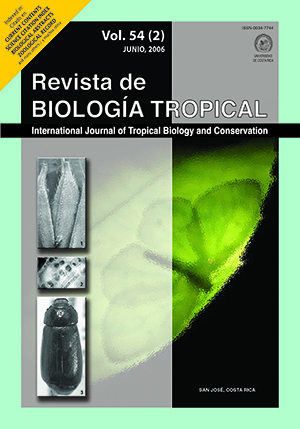Abstract
We redescribe the larval development of Bregmaceros cantori based on 925 specimens ranging from 1.1 to 20.2 mm in standard length (SL), and describe the larvae of B. atlanticus (27 larvae, 1.7-7.5 mm), B. houdei (six, 1.5-1.9 mm) and B. macclellandi (three, 2.4, 3.4 and 5.4 mm). All specimens were collected in the southern Gulf of Mexico from November 27 through December 6, 1998. Larvae were identified to species, and descriptions were made based on pigmentation, and morphometric and meristic characteristics. We defined five development stages: preflexion, flexion, postflexion, transformation and juvenile. In the preflexion stage B. cantori displayed a greater growth in mouth size and head length relative to SL (positive allometry); there was negative allometry from the flexion to juvenile stage. B. cantori have the shortest body height and head length, thus being the thinnest; whereas B. macclellandi larvae are the most robust ones. From the four species reported from the southern Gulf of Mexico, B. atlanticus larvae are the most pigmented in both head and body, with an homogeneous pattern; B. macclellandi presents a different pigmentation pattern consisting in large melanophore groups with a body arrangement that changes from one stage to the next; additionally, from the preflexion stage it develops both the occipital radius and pelvic fins. B. houdei larvae measuring 1.5 to 1.9 mm have melano- phores at the tip of the lower jaw and the head, as well as at the pectoral fin base. Larval development was more pronounced in this B. cantori and B. atlanticus than in specimens from higher latitudes##plugins.facebook.comentarios##

This work is licensed under a Creative Commons Attribution 4.0 International License.
Copyright (c) 2006 Revista de Biología Tropical






